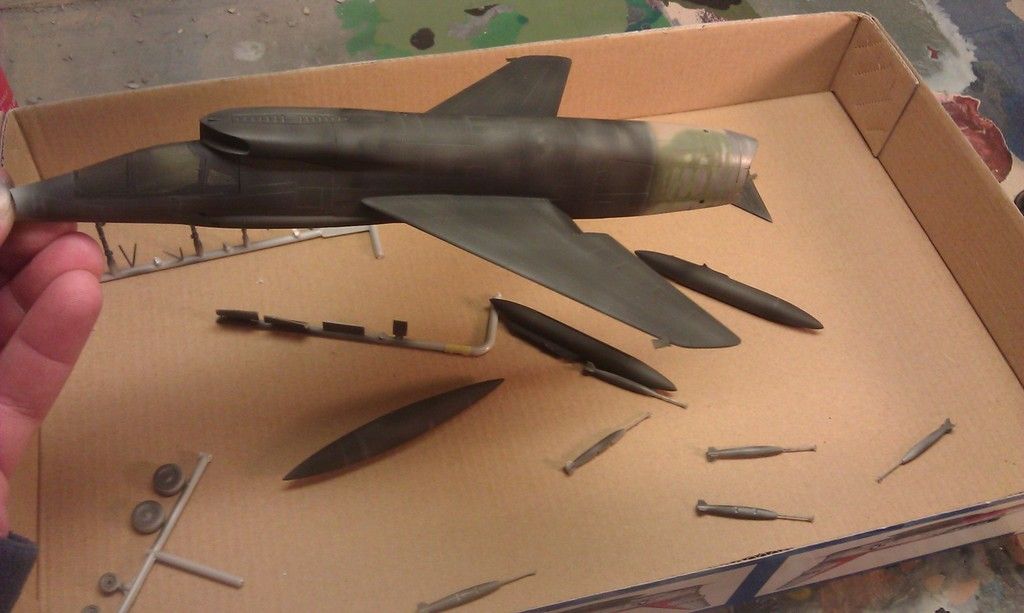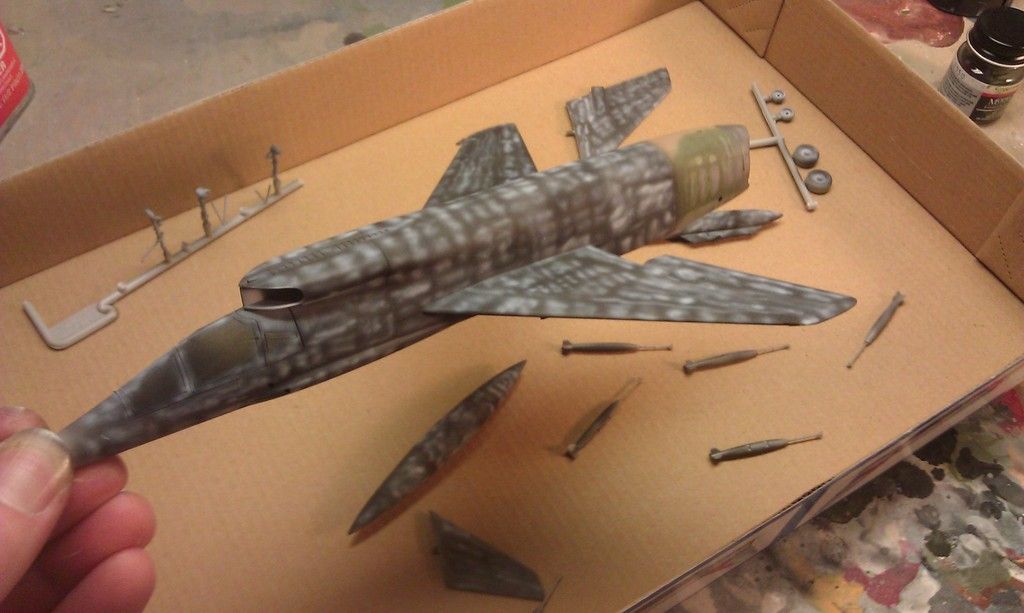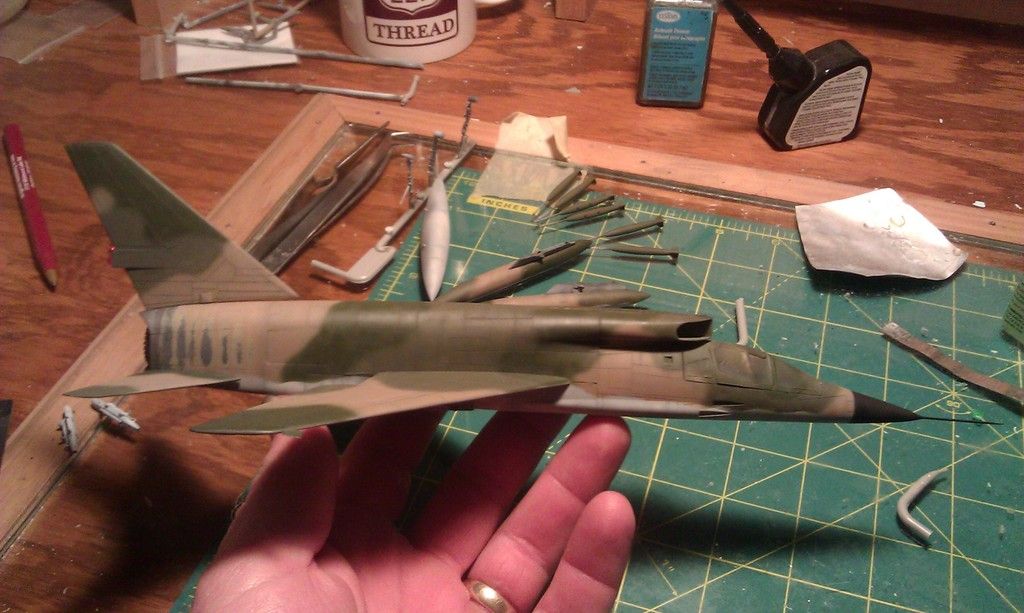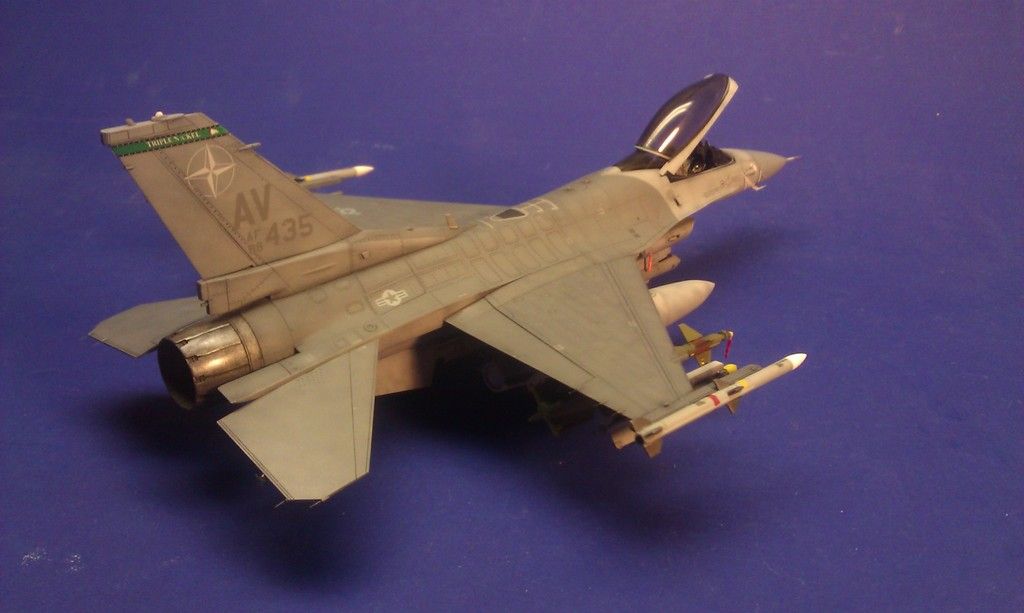Which is best–preshading or post shading? It seems you would have more control of paint thinness and therefore density of spray with postshading.
There is room for both techniques- they give different effects. Pre-shading, to me, does better emphasizing the panel lines themselves, post shading does better on shading the panels themselves.
I don’t understand how they give different effects. It seems that shading before or after wouldn’t matter–the panels would still be lighter than the shade between them after airbrushing. It’s just thin black paint doing the shading right?
There is a bit of difference between pre and post shading…not a night-n-day difference, but a subtle one.
I did the typical pre-shade thing for a while…where just the panel lines are hit with black. Then I’d spray heavily thinned base colors over that…then, I’d lighten the base color and do highlights, randomly, to vary the color/tone. “Pre-shade, post-highlight”, I guess you could call it.
Nowadays, I do all the tonal variation in black and white, before spraying any color.
Starting with black…

Then white…

Then color…

It’s tough to pick out the tonal variation in the pic…but you can see it in person…which is right where I like it to be!
You can see the effect a little better on this one…the wing especially.

I never liked the looks of post-shading…meaning spraying a darker color (like Tamiya “smoke”)over the panel lines after the painting is done.
Post shading to me can be more refined and accurate looking once you get the hang of it. You’re not just looking to shade along panel lines, but any areas that create shadows,i.e. Wing roots, right angles and such. Also any areas that are just more dirty than others. I mean, you can’t add exhaust stains using the pre-shade method. Regardless, any weathering you do must look in scale with the model.

Here is what I have done with my post-shading, its interesting in that in the picture, the way the light hits the lines, the port wing looks to have lighter panel lines than the starboard side; however, in person they are the same color. It must have to do with the way the light is reflecting from the paint. I did a base coat of dark gull grey, lightened with a few drops of light compass grey, then I came back with straight dark gull grey and hit the panel lines. After, I took a very thinned lightened coat of dark gull grey and lightly hit the centers of the panels.
It is interesting how well both techniques look, and how they add appeal to the model, even if they are not realistic. I think it is important to look at finish of real aircraft first, and then decide whether you want to make the model look accurate or look interesting.